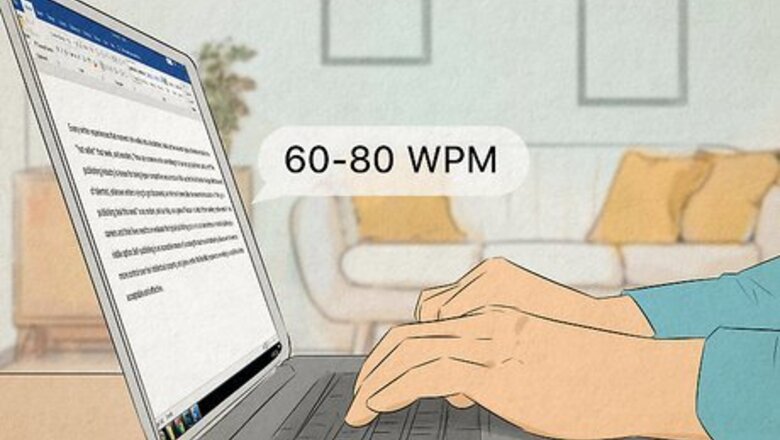
views
- 60-80 is considered a fast WPM, but 30-40 is average for most adults.
- Accuracy is just as important as speed, because if you can type quickly but make a lot of mistakes your work will need to be corrected often.
- You can work on increasing your WPM by studying your keyboard layout, practicing your typing via dictation, and learning to not look at your keyboard while you type.
What is considered a fast WPM?
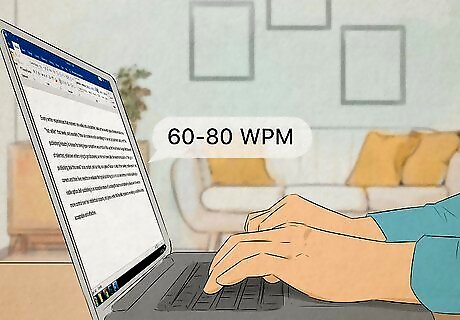
60-80 WPM is a fast WPM. Experts in the tech field say that this rate is what you need to be able to match the speed of your thoughts. In order to achieve a quick typing speed like this, you'll need to improve your technique, meaning your posture and hand placement as you type.
What is the average WPM?
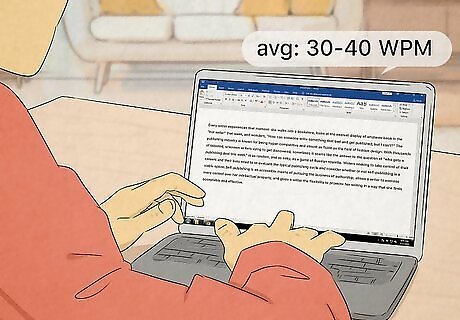
The average typing speed is 30-40 WPM. Most employers will be perfectly happy with this speed. As voice dictation becomes more popular in the workforce, typing may not be considered as important of a skill. Still, some roles that require more typing, like receptionists and office workers, may benefit from quickening their pace to be higher than the average.
How do I determine my WPM?
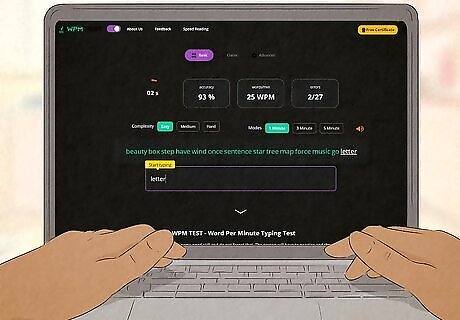
Take a free online test. These tests calculate your WPM by dividing the words you type by the amount of time it takes you to type them. For the purpose of this calculation, a "word" counts as 5 keystrokes, including letters, numbers, punctuation marks, and spaces. The tests measure how many words you can type in 1 to 5 minute periods. Take these tests multiple times as you work on your speed to see how you improve your WPM over time. Free web apps that offer these tests include The Typing Cat and Typing.com. You can also type on a word count site such as monkeytype to get an idea of your speed.
How can I get a faster WPM?
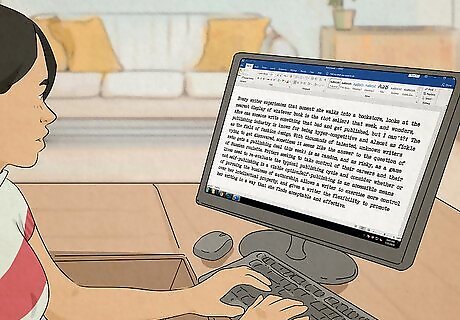
Achieving a faster WPM requires time and practice. Improving your WPM will involve working on your speed and accuracy. To improve both, try studying and memorizing the layout of your computer keyboard (most use the QWERTY layout). You might also try practicing dictation to type faster. To do this, follow along with an audiobook or a TV show and type everything you hear. Even if you're already a fast typer, these practices can help you improve both your accuracy and your speed. Experts agree that it's best to work on your accuracy first, as you'll develop a faster speed as you get more comfortable using the keyboard. If you have a high WPM but low accuracy, the speed at which you type won't be valuable to employers. Though many jobs don't necessarily require a certain WPM, improving your typing speed can help you get your work done more efficiently. You can also boast about having a stellar WPM if you get super fast!
What tools can help me improve my WPM?
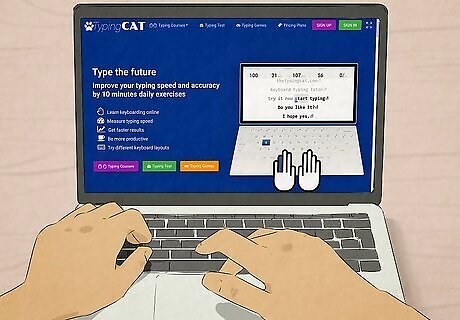
Check out free web apps for typing lessons, exercises, and more. These offer tests and games so that you can improve your speed and accuracy in addition to tracking your progress over time. You can also download apps on your phone so that you can practice your typing skills when you're out and about. Free online typing test options currently include The Typing Cat and Typing.com. These web apps offer their services for free, but some also offer paid subscriptions if you don't want to deal with ads or would like more practice options. monkeytype is a popular website to check your WPM, though it doesn't offer any courses or tutoring options.
How can I improve my posture and hand placement to type faster?

Keep your back in line with the back of your chair. Relax your shoulders with your elbows bent as you type, and rest both feet firmly on the ground. Maintaining this posture as you type helps you quicken your pace and limit typos and mistakes. It also puts less stress on your wrists while you type. Ergonomics are very important when it comes to typing.

Place your right index finger on the J key and your left index finger on the F key. This makes it so your fingers rest on the keyboard's middle row, also known as the home row. As you type each letter, use whatever finger is nearest to the letter from the home row to type. To make things easier, use your thumbs to hit the space bar and your pinkies to hit the shift key.
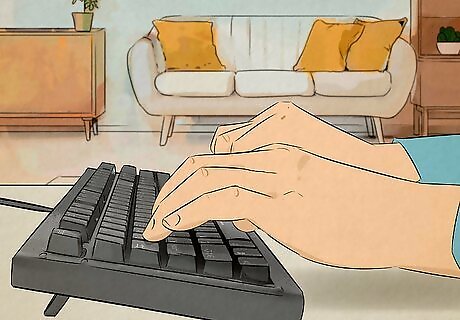
Keep your wrists straight and avoid resting them on your keyboard. This may be surprising, but resting your wrists on your keyboard can cut off the blood circulation in your wrists and put pressure on your tendons. This tires out your wrists over time and makes you type less efficiently. To improve your speed and keep your wrists comfortable, hold your wrists straight over the keyboard. If you need to use a wrist pad, try pushing it straight against your keyboard and resting your palms on it instead of your wrists. Think about investing in an ergonomic keyboard and one of those roller mice.
What types of keyboards help you improve your WPM?
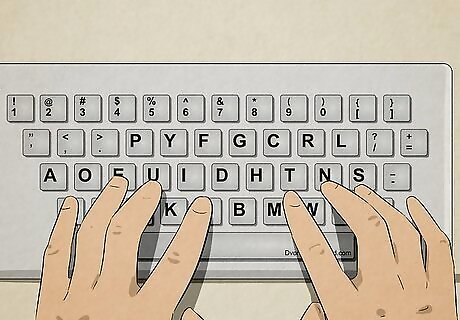
Alternative keyboard formats like Dvorak and Colemak may help you. These keyboards have rearranged which key is assigned to which letter to increase typing productivity, and the quick access to common letters on both keyboards may help you increase your WPM. The Dvorak keyboard places the least common letters on the bottom row of the keyboard. This allows quick access to more common letters at the top and the home row. The Colemak keyboard places the most commonly used letters on the home row, which boosts the number of words you can type using just the home row. Note that if you're used to typing on a standard U.S. QWERTY keyboard, getting used to a new keyboard layout will take some time.
How can I learn to type without looking?
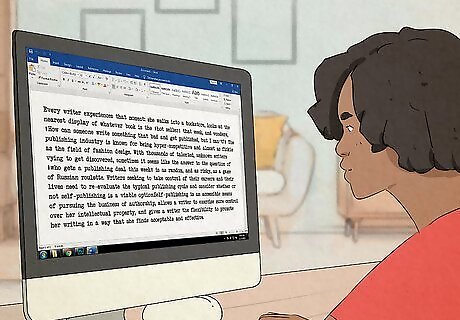
Use helpful tools and exercises to build up your muscle memory. Practice by creating a new document and typing any word you can think of without looking down at the keys. At first, focus more on your accuracy than speed. As you get more comfortable, your speed will improve as well. If you're really set on improving your muscle memory, buy a keyboard cover or a blank keyboard to prevent you from seeing the keys. You can also use an onscreen keyboard to avoid looking down at the keyboard on your device. To activate this, visit your computer's search bar and enter "keyboard" to find your preferences.

















Comments
0 comment